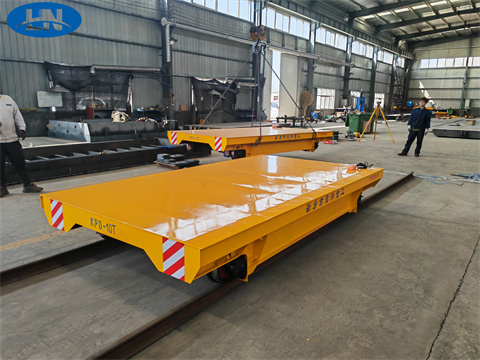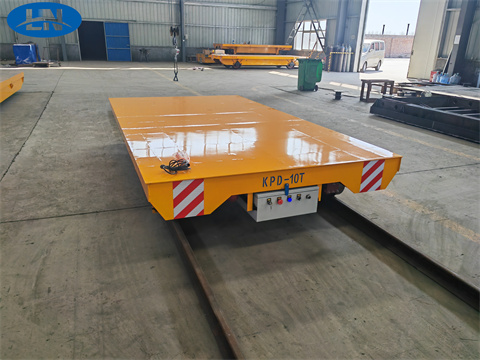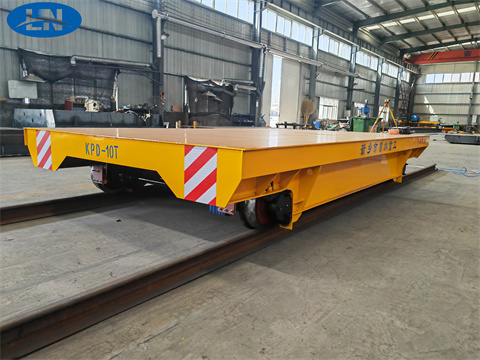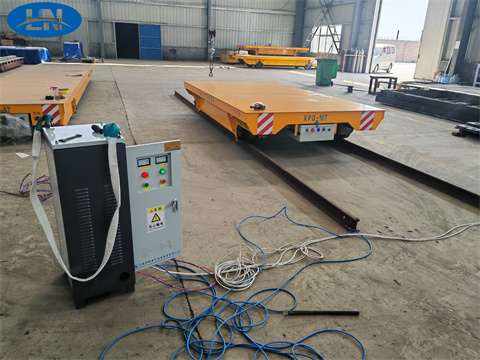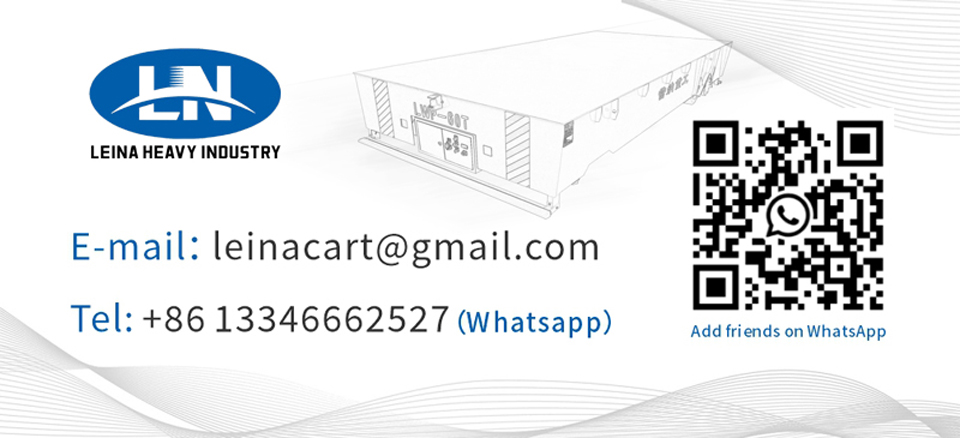A rail transfer cart is a rail vehicle that uses two steel rails laid on the ground to draw power for operation. It is called a low-voltage rail-powered electric transfer cart, or a rail electric transfer cart. It is often used in conditions that require long-distance transportation and frequent use. It can be divided into many different types. The advantages and performance of low-voltage rail electric transfer carts are as follows:
Working principle:
The low-voltage rail electric transfer cart is a 36V low-voltage rail-powered electric transfer cart. Its working principle is to reduce the voltage of 380V power supply (three-phase or single-phase) to a safe voltage of 36V through a ground-controlled step-down system. The power is fed to the conductive rail (the conductive rail also serves as the walking track of the transfer cart), and the low-voltage electricity is sent to the step-up transformer on the car through the conductive device of the transfer cart. The voltage is stepped up to 380V to drive the three-phase or single-phase capacitor motor to drive the transfer cart to run.
Features:
Low-voltage rail electric transfer carts usually choose a DC electrical system for less than 60 tons and an AC electrical system for more than 60 tons. The most obvious feature of the rail electric transfer cart with rail power supply is that the power supply of the rail electric transfer cart comes from the rail, so its rail should be insulated when laid, and try to avoid open-air use to avoid flooding and short circuit between the rails.
Precautions for use:
The electric rail transfer cart with low-voltage rail power supply has a relatively obvious advantage. It has a wide load design range and can meet the requirements of hundreds of tons; it does not carry cables and does not affect the passage of other means of transportation; it can meet 24-hour use, and full-load work is not a problem; it is easy to realize automated design and transformation, and has a wide range of applications.
Compared with battery rail transfer cart, low-voltage rail transfer cart has obvious advantages in large tonnage and long working time. Compared with cable and cable drum transfer cart, low-voltage rail transfer cart has obvious advantages in transportation distance. However, it should be noted that if the distance is too long (>70 meters), it is necessary to add ground control cabinet to compensate for the voltage drop. Because it uses rail power supply, it is suitable for places without waterlogging. This is because if the two rails are flooded, a short circuit will be formed, which will cause danger.
If you are a customer who has installed a low-voltage rail transfer cart, you need to pay attention to the fact that before the rail electric transfer cart is driven, you need to check whether there are conductive objects on the two rails on the rail section to avoid short circuits. The carbon brushes on the transfer cart wheels are consumables. If your rail electric transfer cart stops and starts after long-term use, you need to check whether the carbon brushes of the transfer cart need to be replaced.
